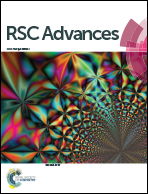Detection of oxidative stress biomarkers in myricetin treated red blood cells
Abstract
Homeostasis is a key characteristic of cellular lifespan. Its maintenance influences the rate of aging and age related disorders. Only certain flavonoids have been shown to alter homeostasis of red blood cells in the course of aging. It has been demonstrated that myricetin possesses both antioxidant and pro-oxidant properties. The objective of this study was the determination of the membrane bound oxidative stress biomarkers (Na+, K+-ATPase, Ca2+-ATPase, and Na+, H+ exchanger) activity in myricetin treated red blood cells during human aging. The study was carried out on clinically relevant blood samples obtained from 92 healthy subjects between the ages of 20–79 years. The subjects were divided into three age groups, young (18–35 years), middle (36–60 years) and old (>60 years). The effects of myricetin were evaluated by detecting Na+, K+-ATPase, Ca2+-ATPase, and Na+, H+ exchanger activities by co-incubating the red blood cells in the presence of myricetin (10−8 M to 10−3 M final concentration). The results showed significant (p < 0.001) age dependent decline in the activities of Na+, K+-ATPase, and Ca2+-ATPase and elevation in the activity of Na+, H+ exchanger as compared to the respective young controls. In vitro administration of myricetin significantly attenuated the deleterious effect of oxidative stress in red blood cells from all three age groups. We believe that these findings are novel and they will help in further research against oxidative stress in red blood cells, thereby this study has remarkable scope in medical science.



 Please wait while we load your content...
Please wait while we load your content...